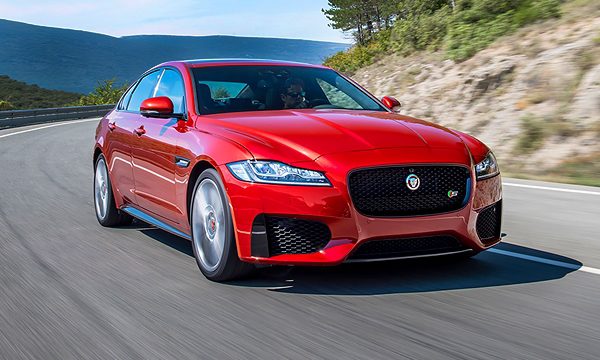
Test drive Jaguar XF
The new Jaguar XF sedan seemed to have been in the hands of a Bond villain: the body was cut in half - mercilessly, along with a figurine of a cat on the trunk lid ...
The new XF felt like it was in the hands of a Bond villain: the body was sawn in half - mercilessly, along with a figurine of a cat on the trunk lid. And all in order to once again demonstrate that the second generation Jaguar sedan, albeit outwardly almost indistinguishable from the previous model, is completely new inside. And its insides, on display, are made of aluminum.
The arrival of the first Jaguar XF in 2007 was like a perilous leap into the abyss, but it was a leap of salvation for Jaguar. In a modern, non-old-fashioned language, the English brand announced that it was ready for change. Ian Callum, who at one time modernized the look of another legendary brand (Aston Martin), managed to create a new, bold Jaguar style.
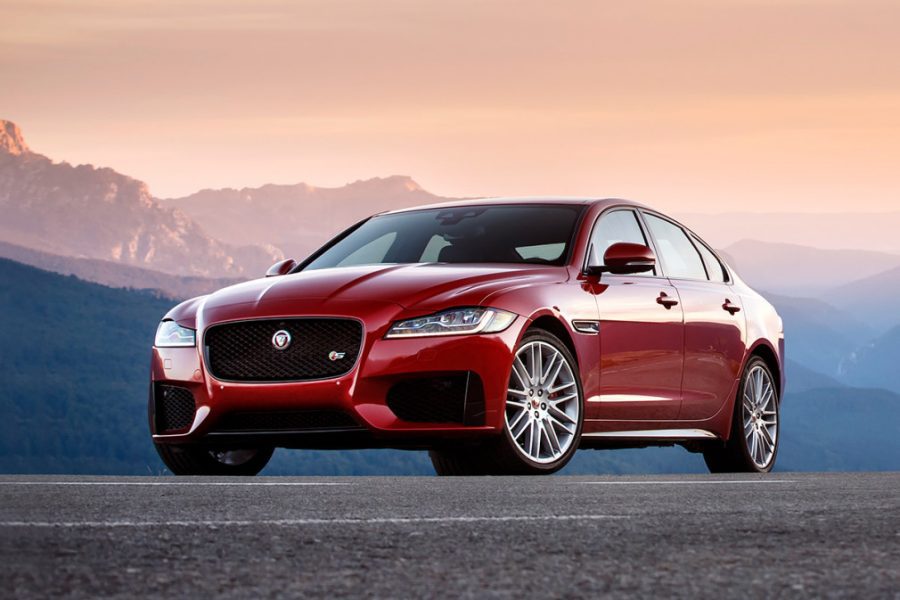
It was a design revolution more than a technical one. Headlights with a characteristic squint, new engines - all this will appear later. They originally wanted to make the XF aluminum, but then there was neither time nor money for it. In 2007, the company was on the verge of survival: low sales, reliability problems. In addition, Ford - long-term owner of the British brand - decided to get rid of this acquisition. It seemed that it could not be worse, but from that moment the revival of Jaguar began. And years later, after building muscle, pumping aluminum technologies, honing design and handling, Jaguar returns to the XF model again - to do what was not possible eight years ago, and to sum up a peculiar result.
The new XF features a longer bonnet and upturned stern. The front overhang has also become shorter. Gills behind the front wheels are in the past. The chrome plank at the stern still divides the lanterns into two parts, but their light pattern has changed: instead of horseshoes, there is a thin line with two bends. The third window is now located in the C-pillar instead of in the door. These are a kind of hints: the younger model, called the XE, has one bend in the lanterns, and the window has two.
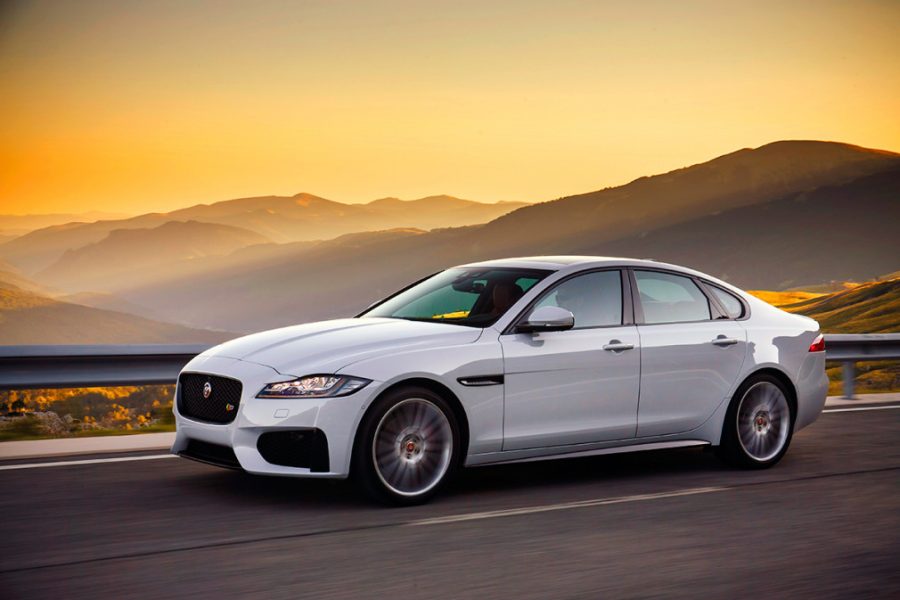
The dimensions of the new XF have changed within a few millimeters. At the same time, the wheelbase has grown by 51 mm - up to 2960 mm. The power structure, suspension is the result of the development of a new aluminum platform already tested on the XE model. She allowed to lose almost two centners of weight in comparison with its predecessor. The BMW 5-Series, which the engineers looked at when developing the new XF, is almost a hundred kilograms heavier.
75% of the body of the new sedan is made of aluminum. Part of the floor, boot lid and outer door panels are steel. The engineers explain that the steel made it possible to play with weight distribution, reduce the cost of the structure, and also make it maintainable. According to them, the aluminum sidewall stamped in one piece can be repaired in the event of an accident - the company has accumulated sufficient experience in this area. Electrochemical corrosion that occurs at the junction of steel and aluminum parts is also not to be feared. It is prevented by a special insulating layer that is effective throughout the entire life of the vehicle.
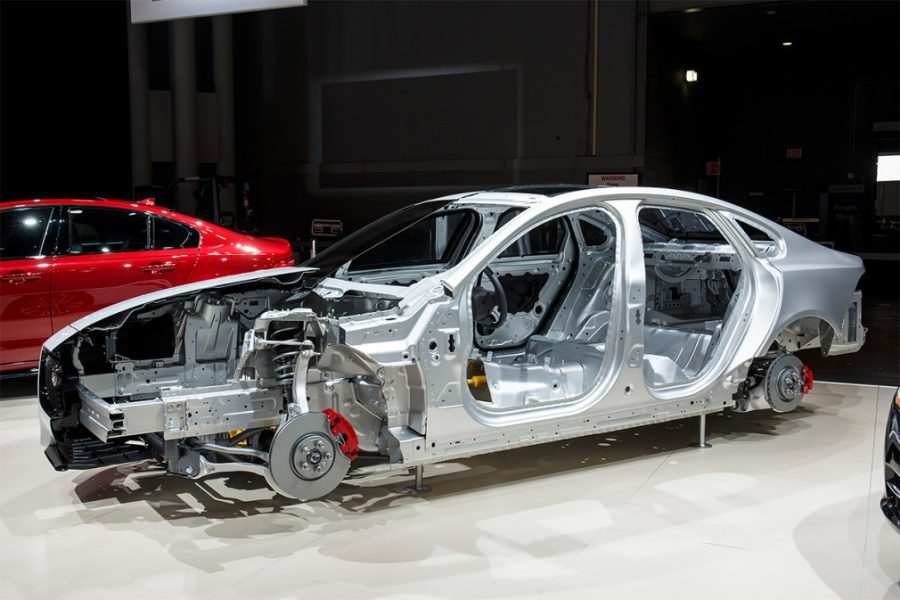
The similarities between XF and XE - and in the interior: a similar center console with two narrow stripes of climate control buttons, a single knob and a silver coin of the engine start button. A plump steering wheel, a dashboard with two visors, and a multimedia system framed by buttons also evoke feelings of deja vu. Even the XF's glove compartment button is now not touch-sensitive, but normal. Of course, such a unification is economically justified, but the previous XF salon was too good. The air ducts leaving the panel on the new car have survived only at the edges, and in the center - the most ordinary grilles.
In addition, the XF business sedan is not at all in the rank of an abundance of hard plastic, which is quite forgivable in the XE. The lining of the central tunnel and the upper part of the arc passing under the windshield are made of it. Where this arch meets the front door cladding, the material difference is very noticeable. And now it is an important element in the interior of all Jaguar sedans: it is in the center of attention and is generously decorated with natural wood. And you can't find fault with the quality of other finishing materials, especially in the Portfolio version.
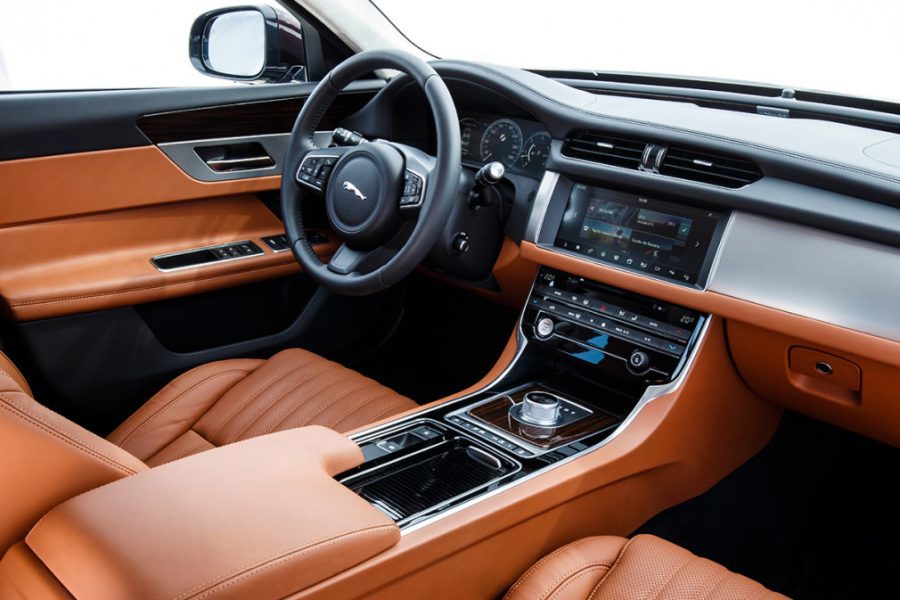
However, the director of development for the Jaguar lineup Chris McKinnon asked to treat the test cars as pre-production and did not rule out that the quality of the conveyor interiors would differ for the better. In the previous XF, the lion's share of spending went to interior design, but this time the company focused on other things. For example, on the development of the new InControl Touch Pro multimedia system with a wide 10,2-inch touchscreen. The system is built on the Linux platform and offers an impressive set of features that Mehur Shevakramani, the developer of InControl Touch Pro, patiently demonstrates to everyone. But even without it, it is quite easy to understand the menu. For example, change the background of the screen, and display the navigation in the entire dashboard, which has now become virtual. The screen responds to the touch of the fingers without hesitation, and the system performance is at a good level. But most of the test cars have a simple dashboard with real arrows, and the infotainment system is simpler - it is a modernized version of the old multimedia on the QNX platform. The menu became clear, and the response time of the touchscreen was reduced. Sure, the system is slower than the InControl Touch Pro, but infotainment systems are no longer a clear weakness in Jaguar Land Rover vehicles.
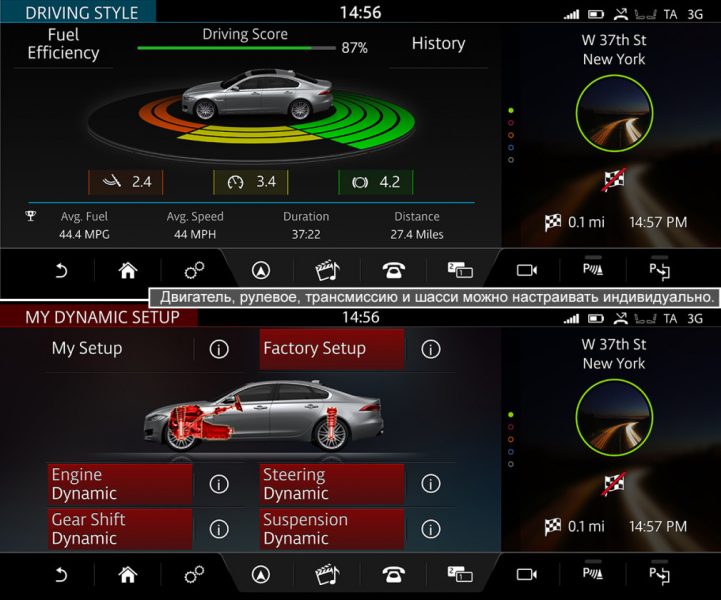
Engineers say they have tried to make the new XF more comfortable, especially since a smaller driver's sedan, the XE, has appeared in the lineup. Due to the increased wheelbase of the new XF, the legroom of the rear passengers has been increased by a couple of centimeters and about the same gain overhead due to the lower cushion of the sofa.
But why then does the test car drive so hard? Firstly, because this is an R-Sport version with a different suspension. And secondly, you need to slow down more - passive shock absorbers with an additional valve relax, and the wheel jumps merrily over bumps. Standard shock absorbers should be softer and would probably be better suited to a car with a two-liter turbodiesel. Such a motor (180 hp and 430 Nm) reacts with reluctance to pressing the accelerator pedal and with all its behavior shows that it will not eat a single milligram of excess. This is the choice for Europeans with biodiesel. Although, to be honest, it's equally weird to see the Vegetarian Jaguar and the Jaguar as a Fleet Car.
But how great such a car is driven. Turns are made by lightly shaking the steering wheel. The effort is natural, transparent: better than that of the previous generation car - moreover, there was a hydraulic booster on it, and here there is an electric booster. If under the hood of such a sedan there should be a diesel engine, then it is more powerful - 300 hp. will be quite enough This is how much the old familiar three-liter "six" Jaguar Land Rover is now developing. The voice acting may be more suitable for a Range Rover SUV, but with it the XF starts to go really fast. Staged supercharging allows you to react to gas without hesitation. And with the "automatic", this power unit finds a common language better. At the same time, such an XF is steered no less accurately - the heavy front end practically did not affect the handling. In addition, adaptive shock absorbers are installed here, which give the car's habits more thoroughbred. In Comfort mode, the XF is soft without laxity, and in Sport mode it is tense but without furious stiffness.
However, in order for the character of the new car to be fully revealed, a V6 gasoline compressor engine is needed, with a maximum power: not 340, but 380 horsepower. And preferably a winding mountain serpentine instead of a straight highway. Then XF will lay out all its trump cards: transparent steering wheel, rigid body, weight distribution almost equally between the axles and acceleration to 100 km / h in 5,3 seconds. But in order to effectively realize the full potential of the power unit, the sedan needs four-wheel drive: in a rear-wheel drive car, the wheels easily slip into slipping, and the stabilization system has to catch feed over and over again.
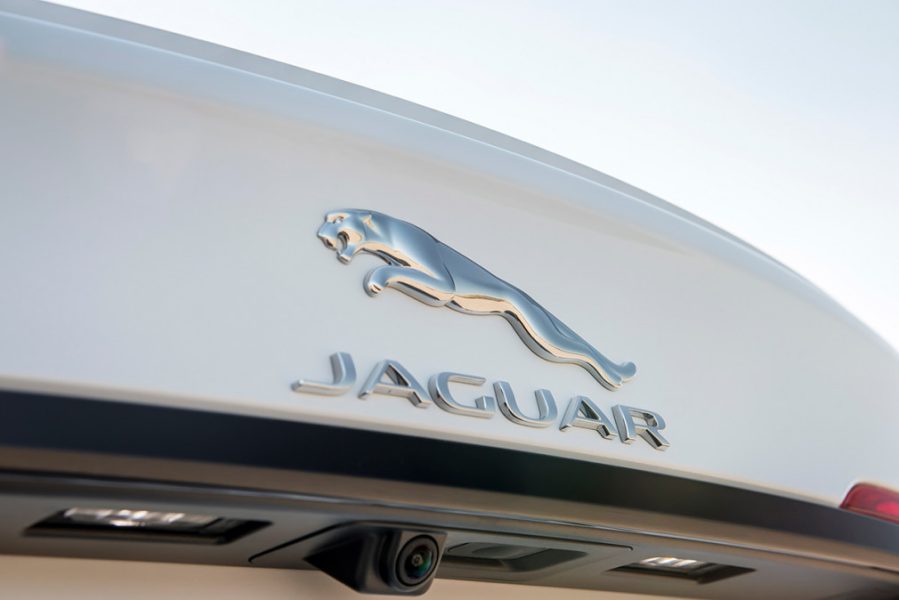
The all-wheel drive XF confidently and accurately passes the bends of the Circuito de Navarra track: on short straight lines the figure on the head-up display reaches 197 kilometers per hour. Moderately recklessly, moderately loud, without deafening re-gasings. The redesigned, lighter and quieter transmission gives priority to the rear wheels, while the electronics act as brakes to help turn the car. Of course, the "automatic" here lacks the speed of reaction when going down, and when the speed is exceeded at the entrance, a large sedan slides with all its wheels. But the brakes do not give up even after three laps on the track.
On another, flooded area, the same XF floats like a yacht: it accelerates, slowly skidding with its wheels, reluctantly brakes in front of the cones. A couple of times he still swims past the turn with his muzzle. But in general, the special transmission mode (it is indicated by a snowflake and is suitable for both slippery and loose surfaces) almost manages to fool the physics.
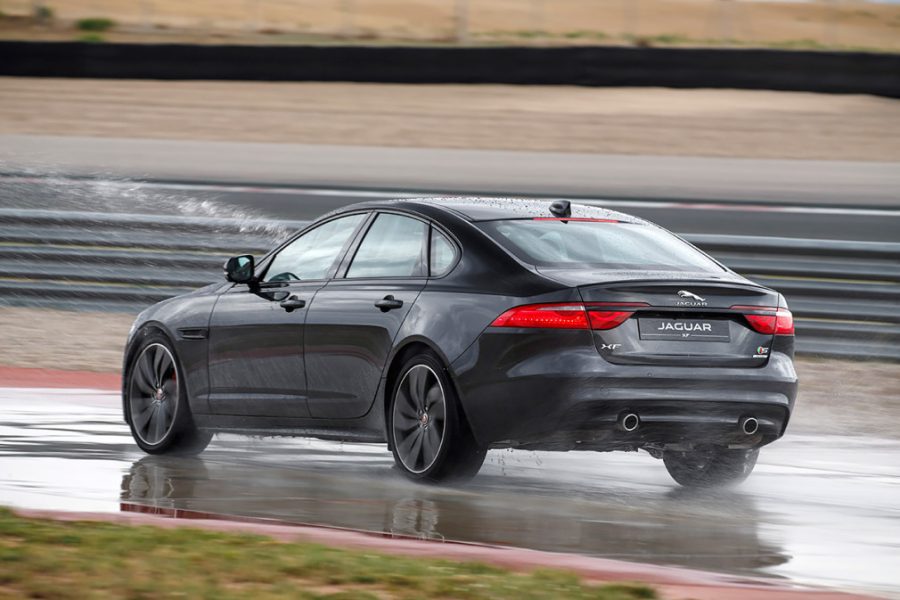
Before the test, I specifically drove the previous generation XF. The previous sedan is inferior in space in the back row, travel comfort, handling, dynamics and options. And the inferior is not so fatal. And its interior still captivates with luxury and style.
Quite by accident, my neighbor on the return flight was the owner of just such an XF. And he fears that in this arms race, for Jaguar, the needs of each individual customer will become irrelevant. After all, now it is much easier to order an exclusive version of a British car than from German competitors with their large production volumes.
Jaguar used to be a small-scale exclusive manufacturer, but it was in a stagnant state. The company now wants to be successful, build more cars, and compete with other premium brands. And it is difficult to blame her for this. In principle, it does everything the same as other car companies. Expands the lineup, for which it even acquired a crossover. Makes cars lighter and more economical. It unifies not only the platforms and the technical part, but also the design of the models and their interiors. Even a serious focus on the handling of premium sedans is also a modern trend.
At the same time, the new Jaguar cars are still distinctive and unlike any others. And not because they use more aluminum, switch between automatic modes with a washer and are equipped with mechanically supercharged motors. They are just different at the level of sensations, emotions. And the discerning audience, gourmets, geeks and just those who want to stand out, will not be able to pass by the products of the English brand.
In the meantime, Russian fans of the brand are forced to be content with the old XF. The debut of new sedans is delayed due to the difficulties of certification of new imported cars and the introduction of the ERA-GLONASS system. Jaguar Land Rover predicts the appearance of the XF closer to spring.
